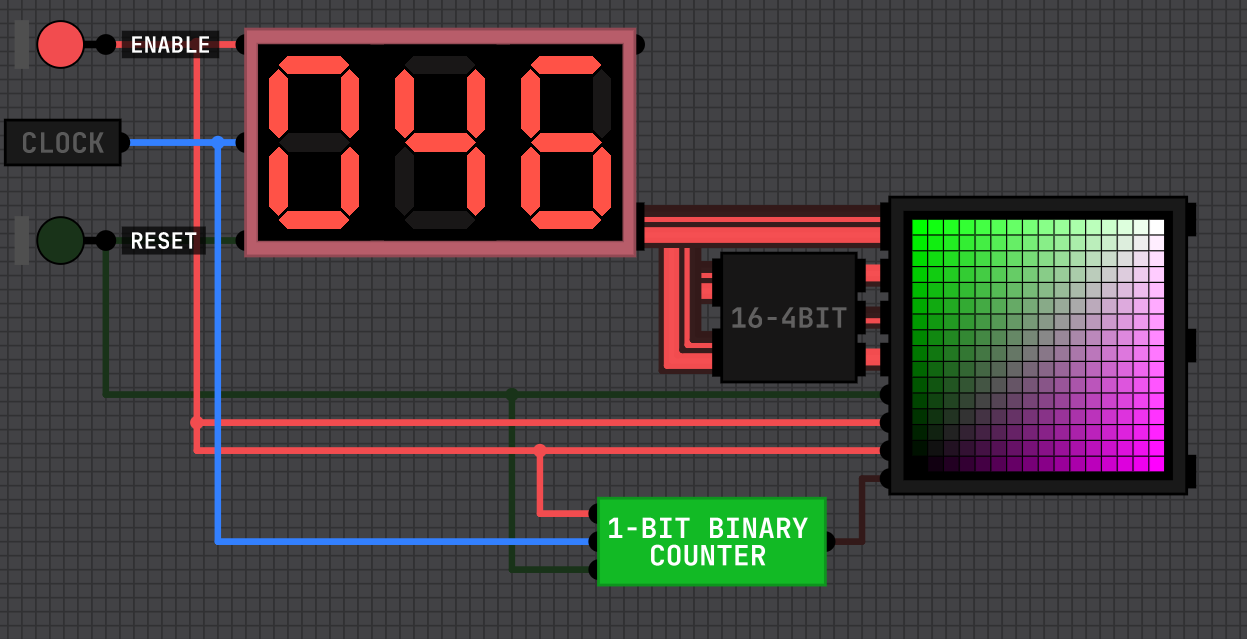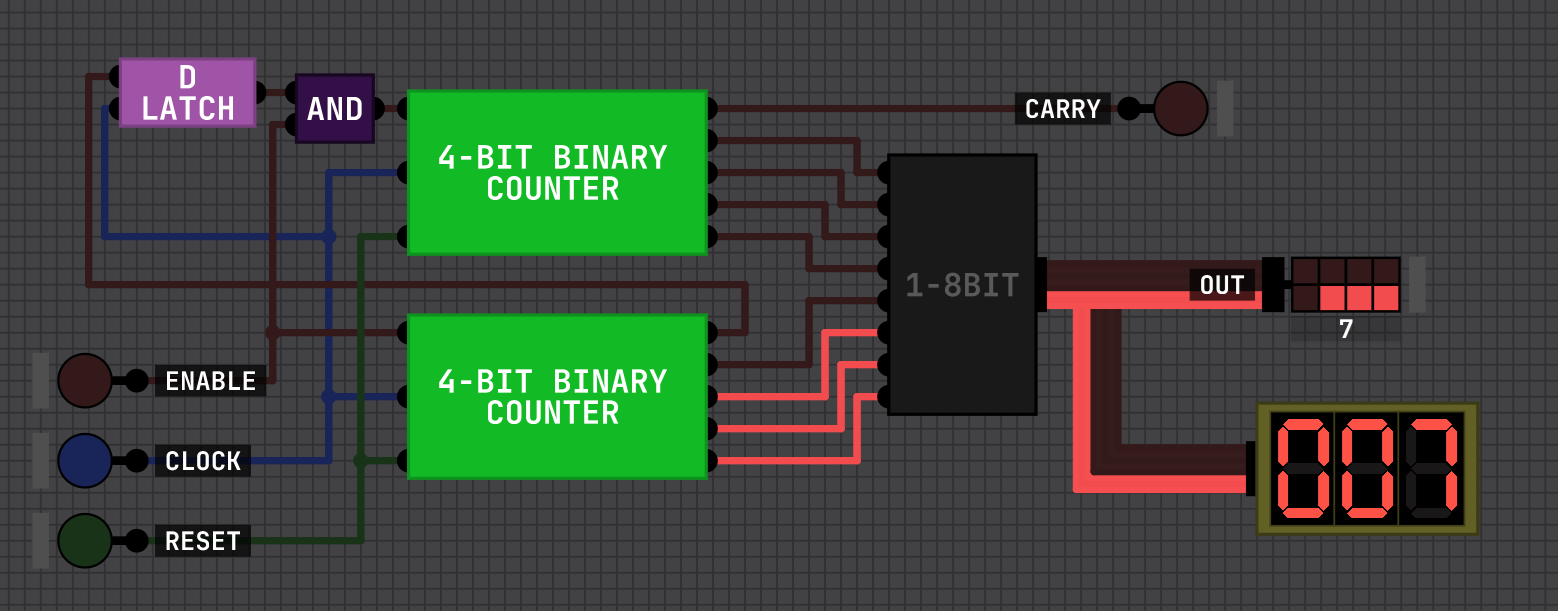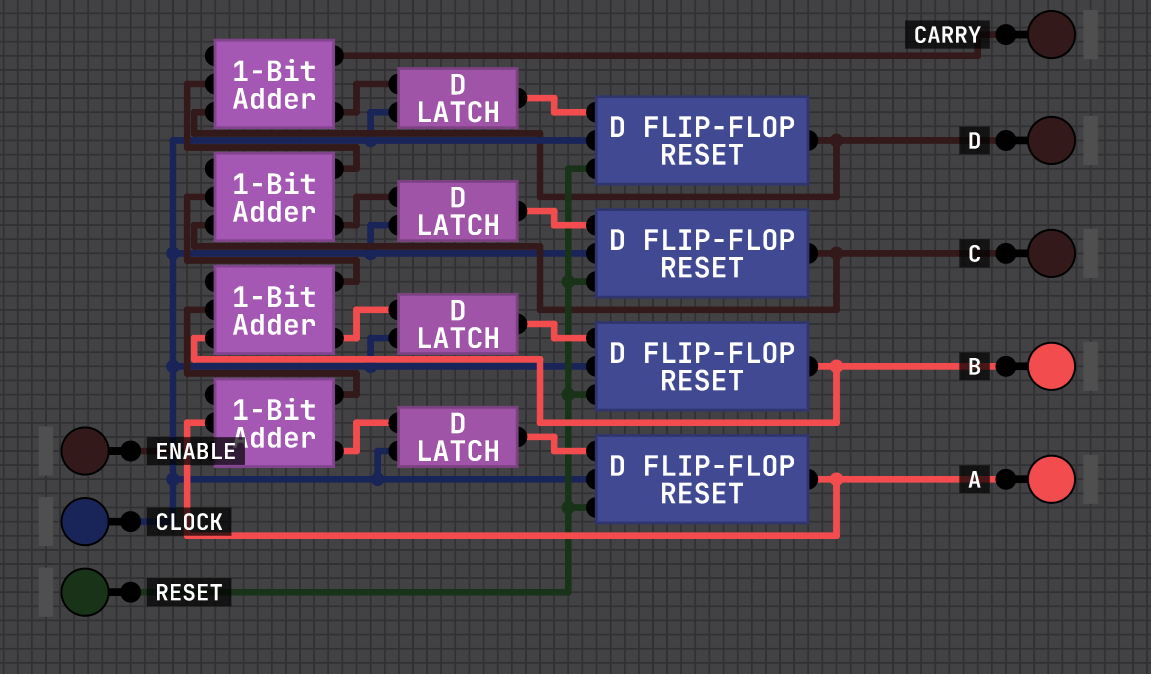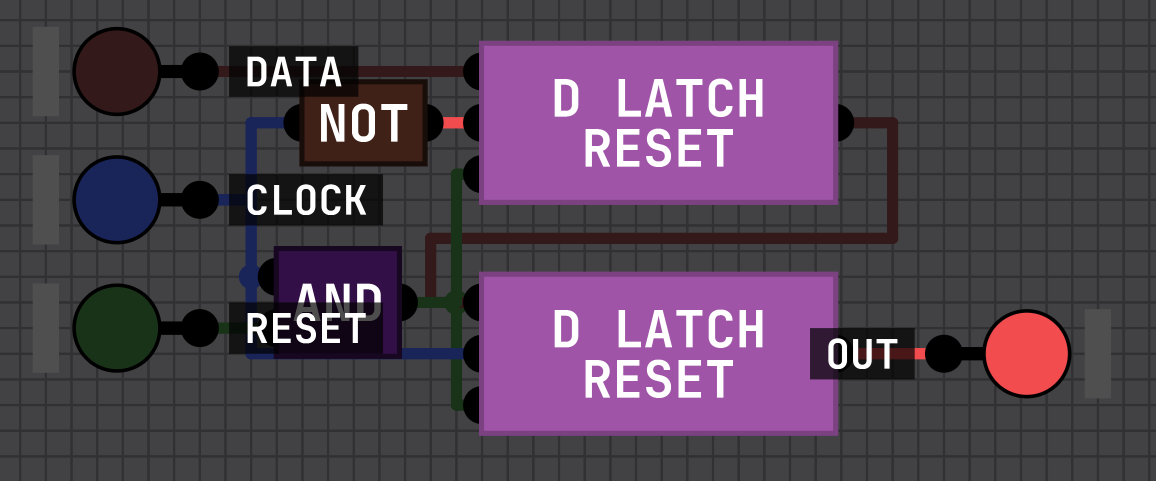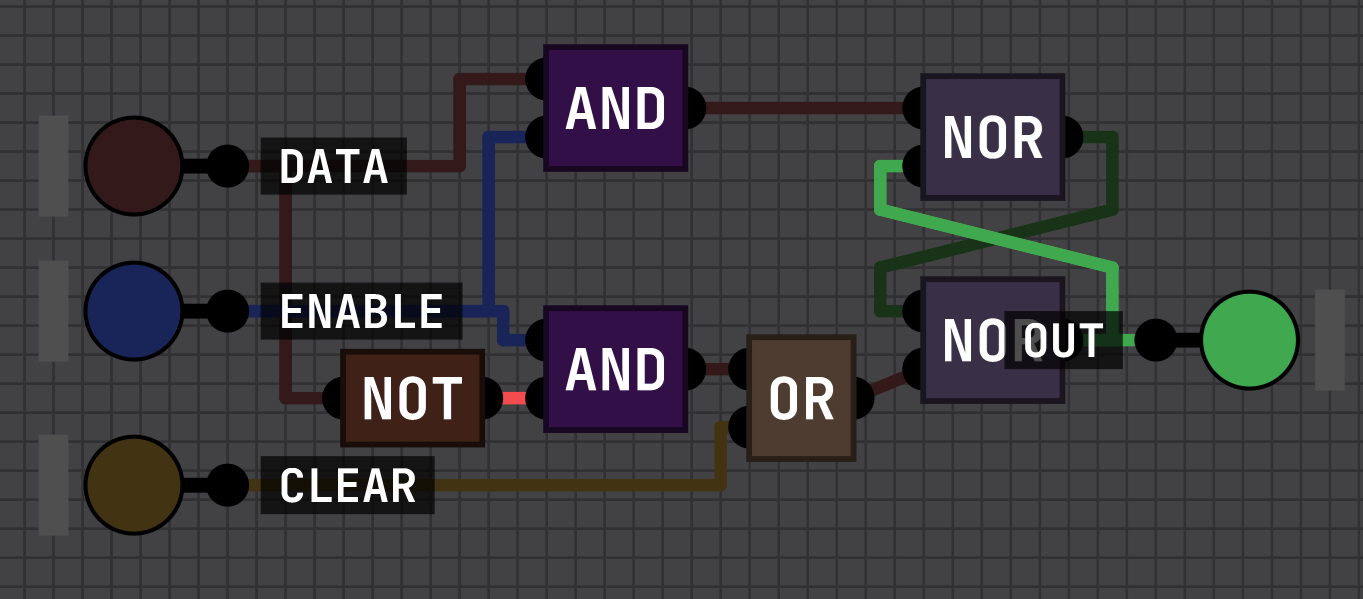Hey guys!
So I've just gotten into this and I'm playing around with the RGB Display, but I get this weird banding pattern and I don't know what's causing it:
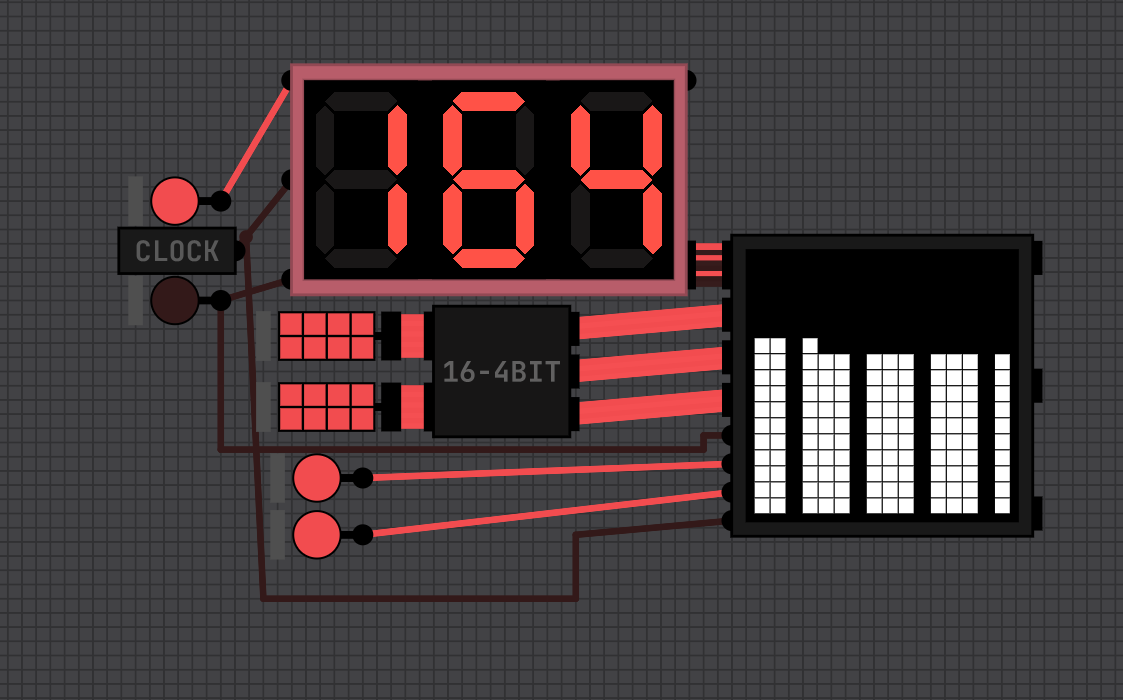
I'm currently cycling through all addresses from 0 to 255 and assigning a pure white colour, but every few steps it'll select an already filled-in pixel to fill again. (I verified this by changing the colour being assigned every few pixels.)
I would understand getting this error if my counter didn't work, but I've verified that it counts correctly by stepping through each clock cycle to check the output number.
Is this a bug with the display or am I misunderstanding something?
Thanks in advance!
(And now that I've written this out one single pixel that normally isn't filled out somehow was lmao)
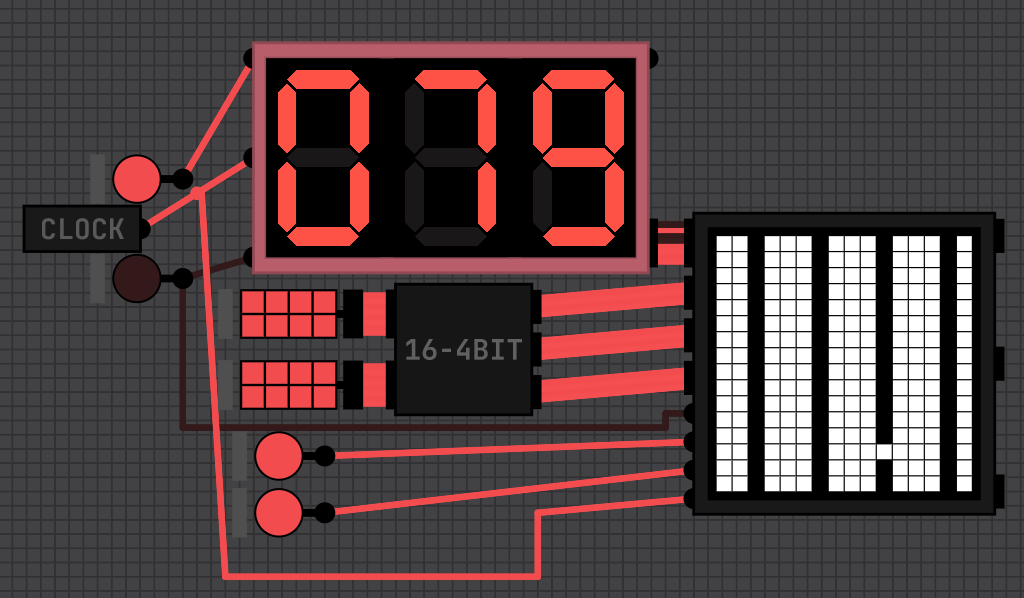



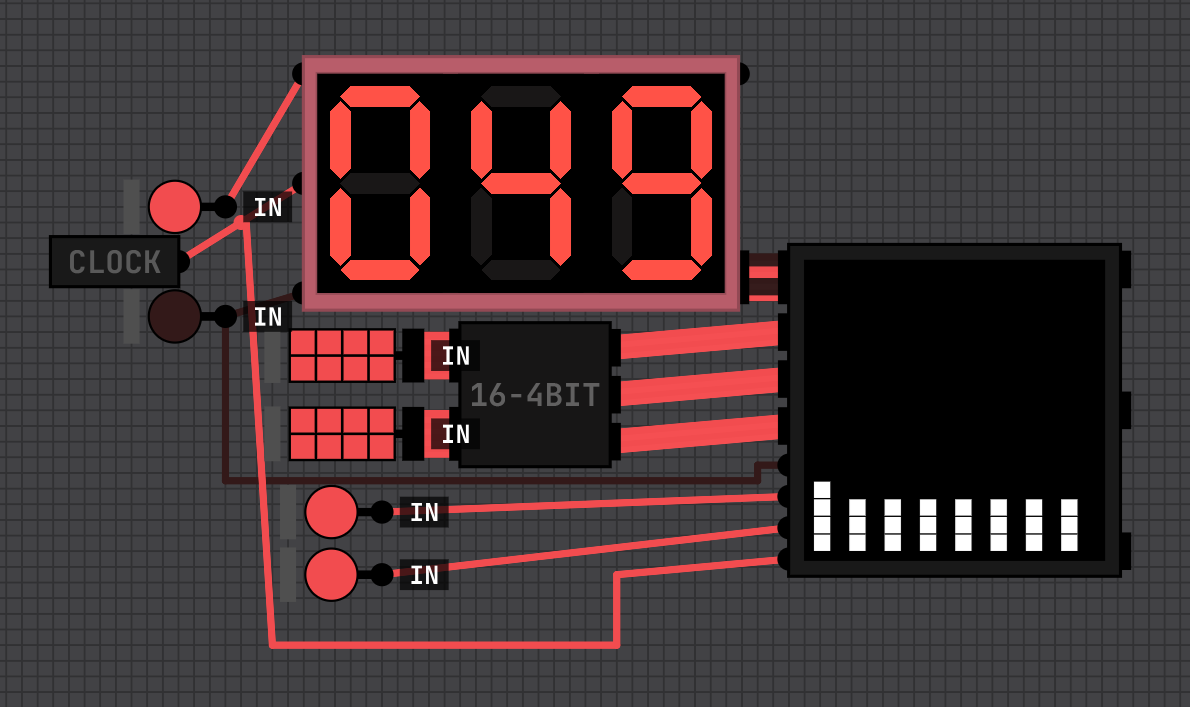
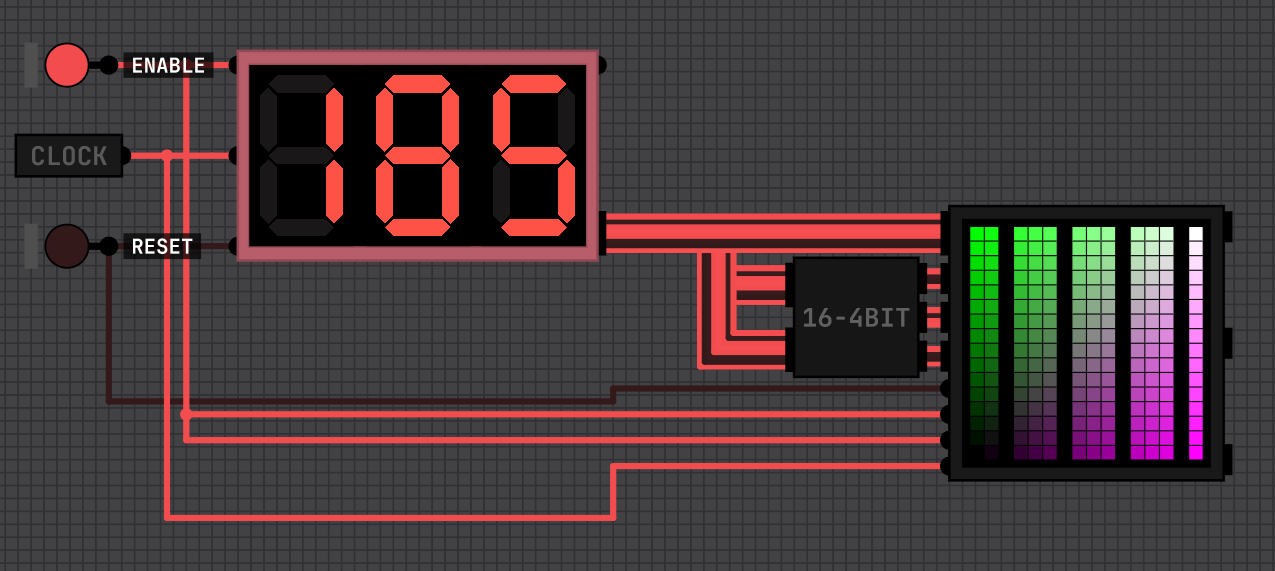 I simplified the inputs and made the colours dependant on the steps as well, hoping to see if anything was being scrambled or anything, but save for some pixels being drawn out of order it doesn't seem like the colours are wrong.
I simplified the inputs and made the colours dependant on the steps as well, hoping to see if anything was being scrambled or anything, but save for some pixels being drawn out of order it doesn't seem like the colours are wrong. 